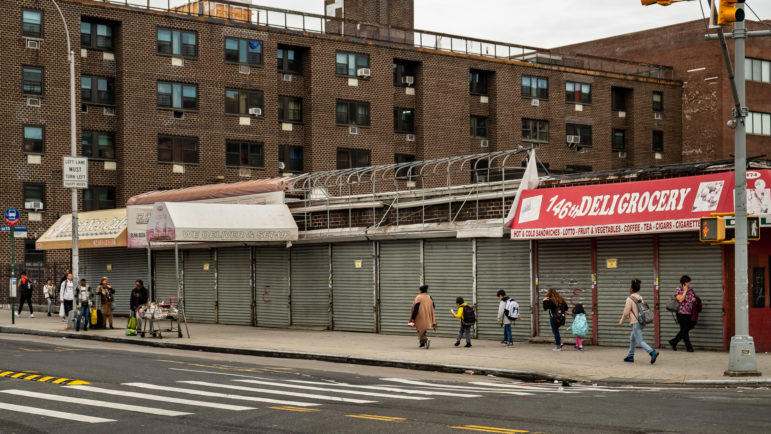The economy would have been a major topic in this campaign year even if COVID-19 never happened. Now, amid massive unemployment, a fiscal emergency, and potential long-term changes in commuting and retail, it’s pivotal.

Adi Talwar
October 2019: Shuttered stores on Willis Avenue just North of East 146th street in Mott Haven.New York City was no economic Shangri-La before COVID-19 struck. Income inequality was gaping. Single adults were crowding homeless shelters in record numbers. On its own, the population of New Yorkers living below the federal poverty line would have ranked as one of the 10 largest cities in the country. Retail strips all over the five boroughs were pocked with shuttered stores thanks to soaring commercial rents, and the property tax system was widely acknowledged to be unfair.
The grass wasn’t thoroughly or uniformly green, by any stretch. But it was a lot lusher than what we are walking on now.
There had been years of steady job growth and reduced unemployment. The poverty rate fell every year from 2015 through 2019. Even after a leftist revolt scuttled a sweetheart deal for the company run by the world’s richest man, tech firms continued to gravitate toward the city’s talent pool and consumer base.
Much of that progress has been halted or reversed by a virus no one had heard of 15 months ago.
The economy is always an issue in city campaigns. It would have been a major topic in 2021 even if COVID-19 never happened. Now, amid massive unemployment, a fiscal emergency, and potential long-term changes in commuting and retail, it’s pivotal.
But how much control do local policymakers have over the city’s economy? What are the policy levers they can use to influence it? What do we even mean when we say “it’s the economy, stupid“?
The hosts of WBAI’s Max & Murphy Show give a brief breakdown of the issue and its contours in the video below, which was produced by Megan Fu.
You can also watch the earlier videos in this series on policing and climate change.








